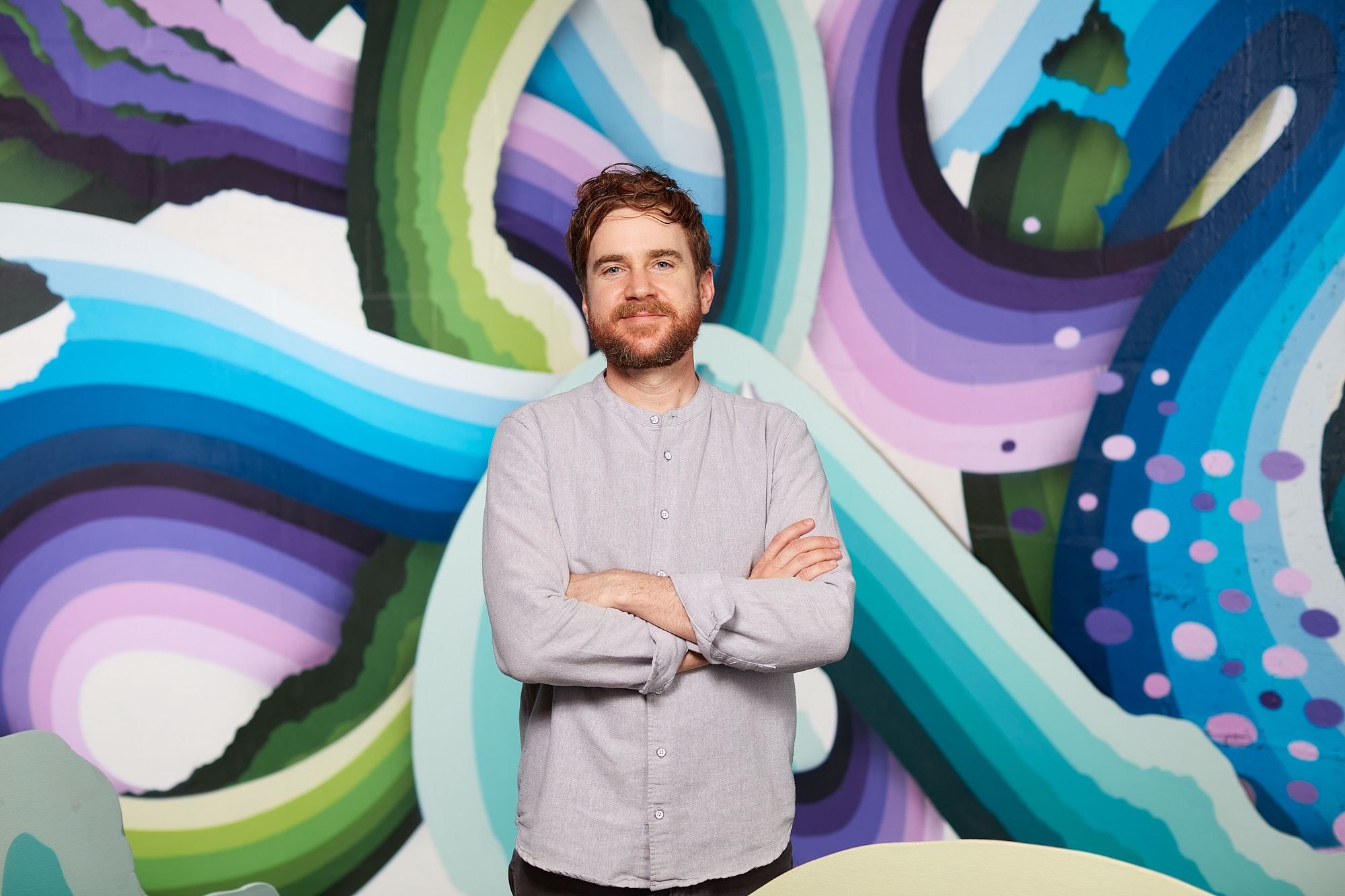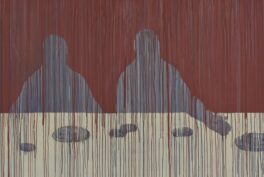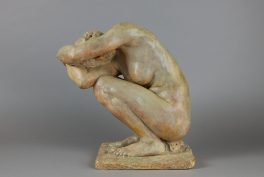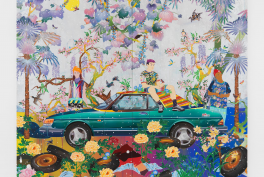Summary
Read our interview with artist Mikhail Mansion, an innovative creator merging art and technology at Fairgrounds St. Pete, a museum of immersive art and technology in St. Petersburg, Florida, USA.
Mansion’s multidisciplinary approach, featuring digital and mechanical elements, underscores his commitment to fostering connections between individuals, nature, and the environment.
Agnieszka Cichocka: How did you start your career with art and technology?
Mikhail Mansion: My journey into the world of creative technology and immersive exhibitions had a somewhat unconventional start. I began my career in the U.S. Air Force, working on advanced technologies related to aircraft and weapon systems.
However, as I progressed in my career, especially when dealing with larger munitions and nuclear capabilities, I became increasingly uncomfortable with the potential consequences of my work.
The turning point for me was when I worked at NASA in Cape Canaveral, using the same technology for missile guidance employed in space exploration. It struck me that I could apply my technical skills more constructively and creatively. This realization led me to pursue art and explore the intersection of technology and creativity.
Once I transitioned to the art world, I naturally gravitated toward the technical aspects of my projects. Whether wiring circuits, creating electronic components, or engaging with maker communities, my approach to art was inherently tied to technology. As maker communities and hackerspaces gained prominence, I saw an opportunity to blend technical skills with artistic expression.
During my time at grad school, I had the chance to participate in programs that allowed for a multidisciplinary approach, blending computer science, music, and art. Eventually, I worked on the Museum of the Future in Dubai, where we applied immersive technology to explore narratives related to healthcare, education, and various other topics. The goal was to present information and create experiential exhibitions facilitating dialogue and engagement.
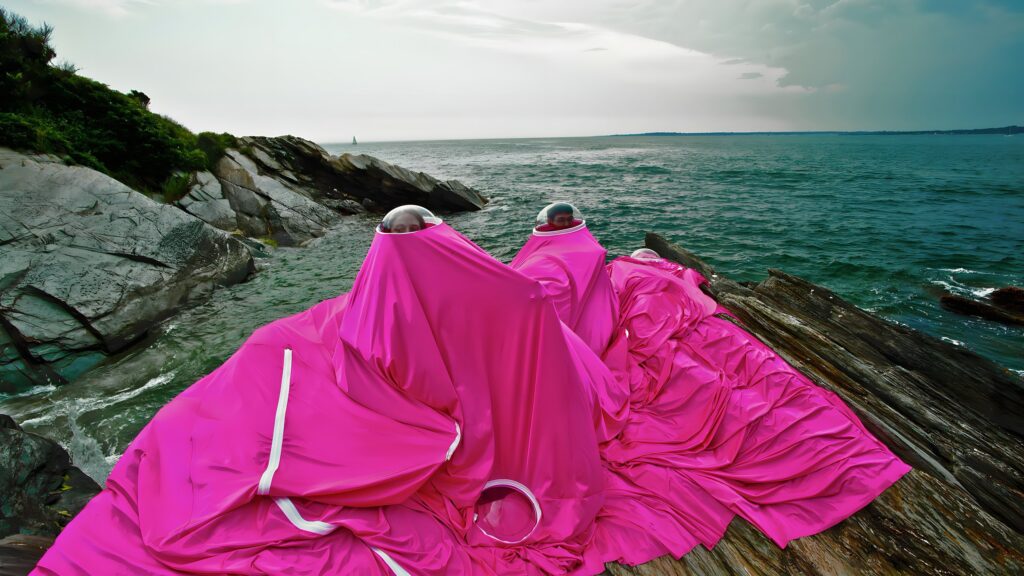
Mikhail Mansion, Back to the Land. Artist’s website.
AC: The transition from working on military technologies to spearheading immersive art experiences is truly inspiring. Could you share more about the evolution of the Museum of the Future and how it transformed from temporary exhibitions to a permanent architectural landmark in Dubai?
MM: Certainly. My journey with the Museum of the Future began in 2014 when I was working as a creative technologist for Tellart (later I became the Director of Creative Technology). We collaborated with the Prime Minister’s office in Dubai to explore future scenarios related to various aspects of society, including healthcare and education. Instead of presenting our findings in traditional reports, we used immersive exhibitions to convey these narratives.
Over the years, we continued to refine and expand these exhibitions, eventually leading to the creation of the Museum of the Future. Initially hosted in temporary locations like tents and convention centers, the Museum of the Future gradually evolved into a significant architectural landmark. Adorned with Arabic writing, the permanent structure symbolized the intersection between art, technology, and foresight.
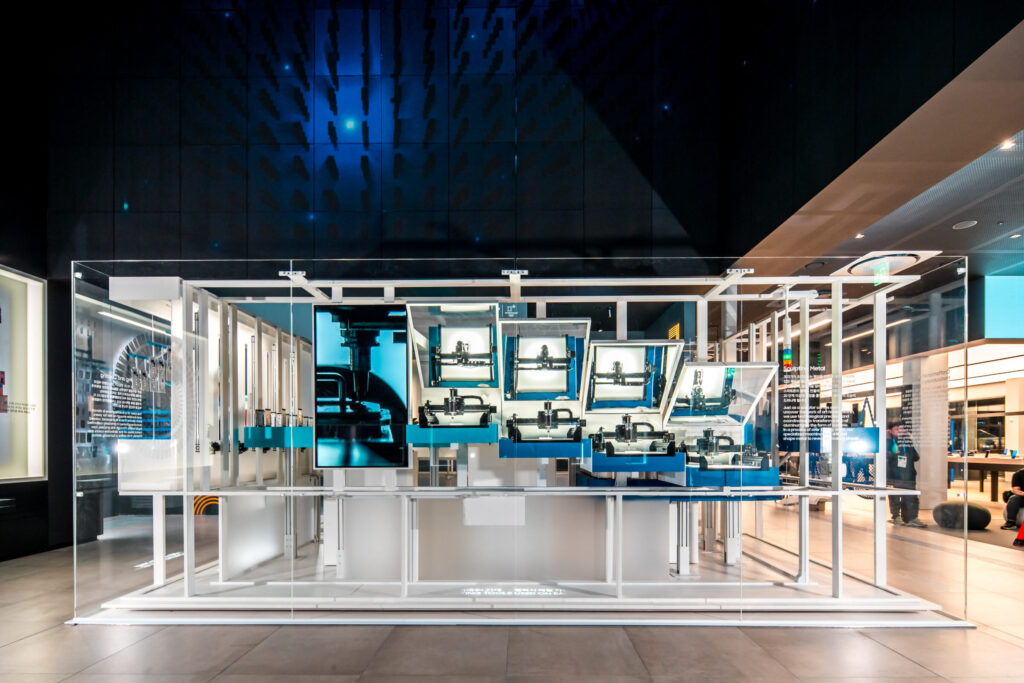
Mikhail Mansion, Craftmanship. Artist’s website.
AC: And this is when the Fairgrounds St. Pete come in. Can you start by providing some background on the project and your role in its development?
MM: Certainly. Fairgrounds St. Pete is a groundbreaking project representing a convergence of art, technology, and immersive experiences. It’s a unique space that defies traditional categorizations, combining elements of a theme park, an art museum, and an escape room.
From the beginning, our vision was to create an environment that would serve as a canvas for collaboration between artists and technology, resulting in a dynamic and ever-evolving interactive experience for visitors. As the founder and Chief Technology Officer (CTO), my role in the development of Fairgrounds St. Pete has been primarily focused on art and technology storytelling. With my team we established a technological infrastructure that underpins the entire space, ensuring seamless integration with the artistic vision.
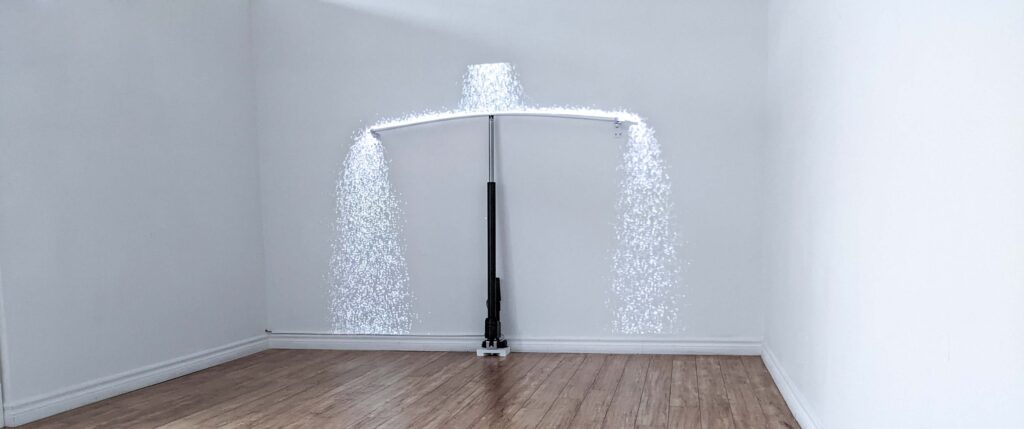
Mikhail Mansion, Rain&Bow. Artist’s website.
AC: It sounds like a fascinating and ambitious project. What is the collaboration process with artists, especially in terms of overcoming challenges and bringing their visions to life?
MM: The collaboration with artists has been at the heart of Fairgrounds St. Pete’s development. We recognized early on that artists were our primary customers, and our approach involved working closely with them from the conceptualization phase to the final execution. We sought out artists who were not only talented but also willing to push the boundaries of their creativity. Some artists brought entire teams with them, while others faced challenges in scaling their work to fit the immersive environment we were creating.
One notable example is our collaboration with an artist named Shane Carey. Initially, Shane had crafted intricate, small-scale laser-cut palm trees. However, we encouraged him to take on the challenge of creating an 11-foot version, pushing the limits of both his artistic vision and technical execution.
As the CTO, my role extended beyond the technological aspects to filling in the gaps for artists. This involved understanding their needs, outlining the scope of their projects, and identifying areas where they required additional support. This support ranged from immersive lighting design to sound elements, ensuring that the artistic ideas were fully realized in the immersive space. Additionally, we collaborated with contractors for structural aspects, ensuring safety and stability in realizing these ambitious art installations.
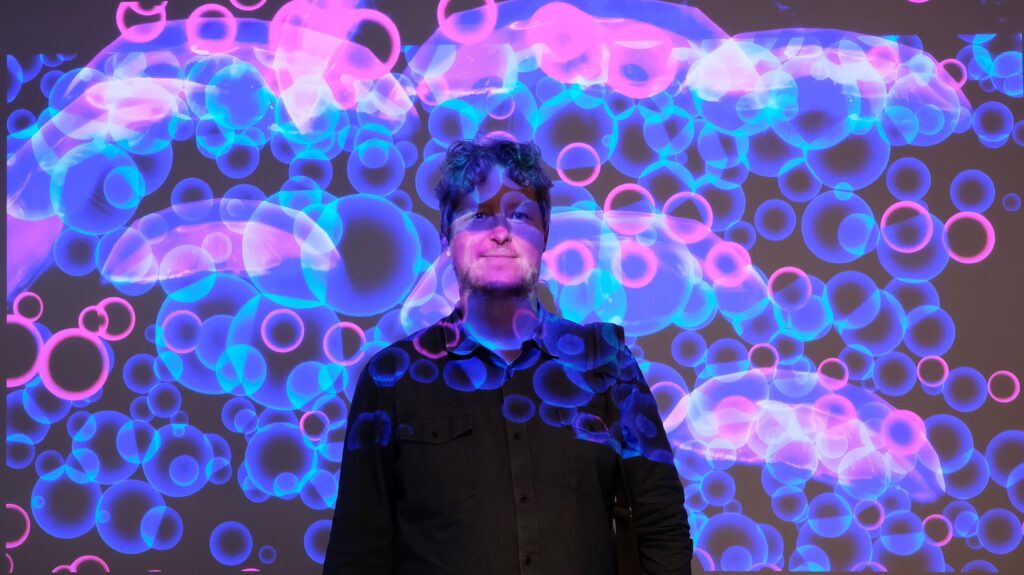
Mikhail Mansion, Aquatic Lifeforms, photo by Jack Lenk. Artist’s website.
AC: What are the narrative elements and interactivity within Fairgrounds St. Pete?
MM: The narrative and interactivity within Fairgrounds St. Pete are key components of the overall experience. One of our guiding principles was to create an environment that encourages exploration and discovery without relying on traditional signage. We wanted visitors to engage with the space organically, discovering narratives as they moved through it. A compelling example is the narrative-rich motel environment within Fairgrounds St. Pete.
In this scenario, visitors might encounter a roadside motel and clues hinting at a mysterious disappearance. The interactive touchpoints embedded in the walls, such as projection mapping animations triggered by hand movements, reveal pictographic stories that unfold as visitors engage with them.
The goal is to create an immersive storytelling experience where visitors can connect the dots and embark on personal quests within the space. Beyond this, we also offer narrative scavenger hunts and paid games, providing different layers of engagement for our diverse audience.
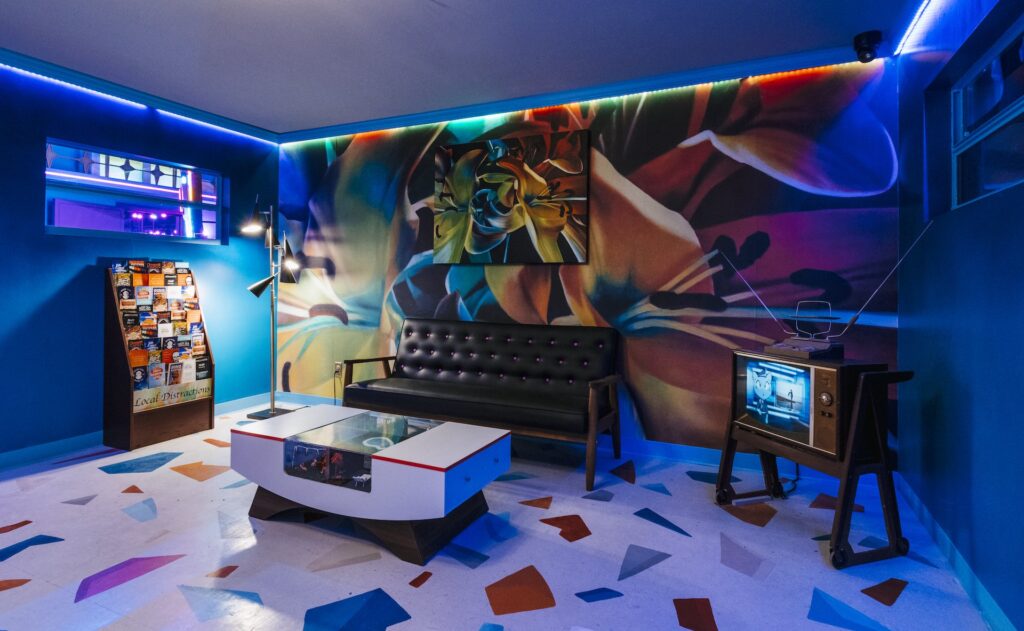
Mikhail Mansion, Mermaid Star Motel Lobby, Fairgrounds St Pete, 2021. Artist’s website.
AC: How do artists leverage technology as a storytelling tool, and how can visitors interact with these technological elements?
MM: Technology is a powerful and subtle storytelling tool within Fairgrounds St. Pete, seamlessly blending into the environment. Artists leverage technology to enhance the narrative elements and create an immersive experience.
Taking the motel scenario as an example, visitors may discover interactive touchpoints embedded in the walls. When activated, these touchpoints trigger projection mapping animations and corresponding sound elements, revealing additional layers of the narrative.
We’ve incorporated a variety of sensors and triggers, ranging from foot pedals to hidden symbols, that unlock hidden information and advance the storyline. These interactive elements extend to immersive lighting, sound design, and even animatronics, creating a multi-sensory experience for visitors. The intention is to provide visitors with the freedom to explore and interact with the space, allowing them to trigger events and uncover stories as they move through it.
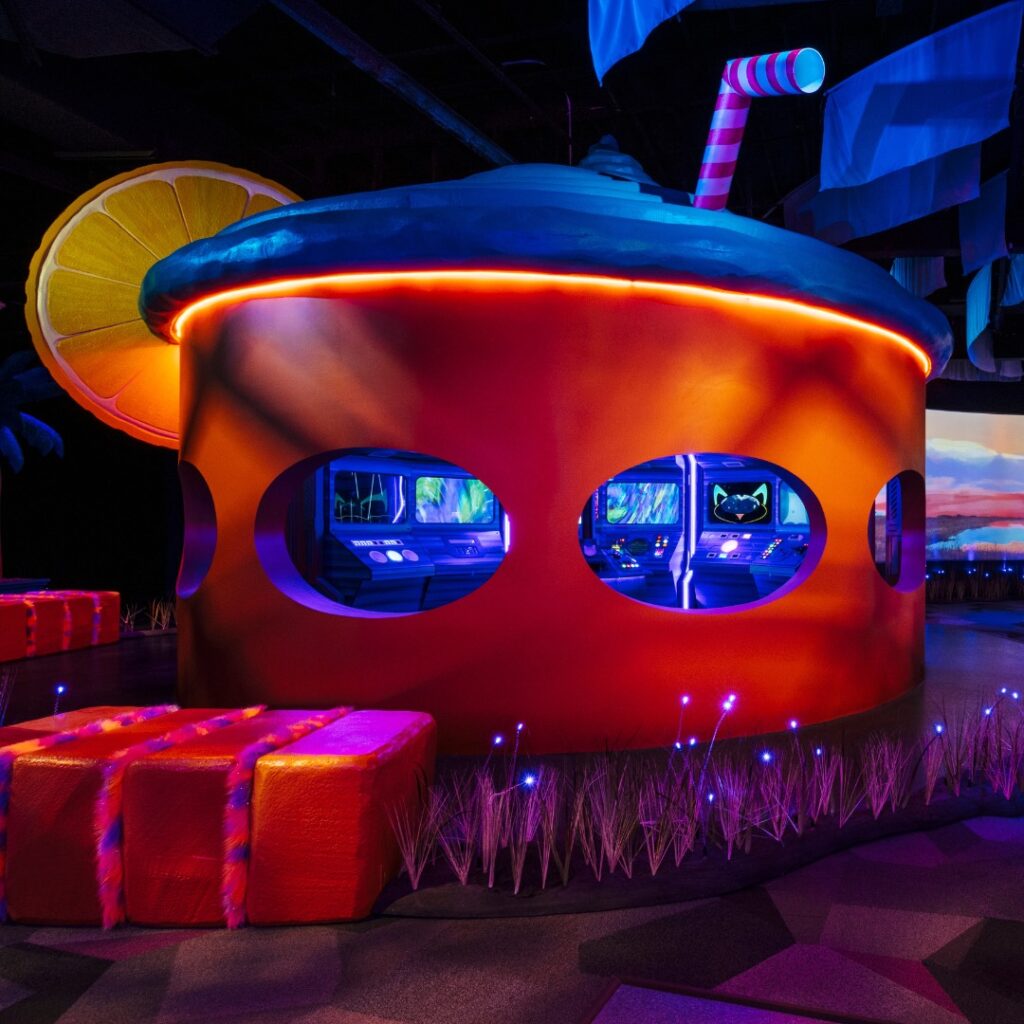
Mikhail Mansion, Fairgrounds St Pete, 2021. Artist’s website.
AC: Looking ahead, are there any specific technology trends or projects you’re considering for the future of Fairgrounds St. Pete?
MM: The future of Fairgrounds St. Pete is filled with exciting possibilities, and we’re always looking to push the boundaries of technology and art. As a living lab, the space allows us to prototype and deploy cutting-edge technology with a live audience, providing valuable insights for future developments. We’ve already experimented with augmented reality, projection mapping, and animatronics, and we’re keen on exploring further integration of artificial intelligence (AI).
I’m currently involved in a project combining AI with narrative writing. We’re collaborating with narrative writing students using an AI system called Inworld AI. The project revolves around creating fictional AI characters that visitors can engage with through an audio-based experience. This represents a unique intersection of storytelling and technology, providing an innovative way for visitors to interact with the space.
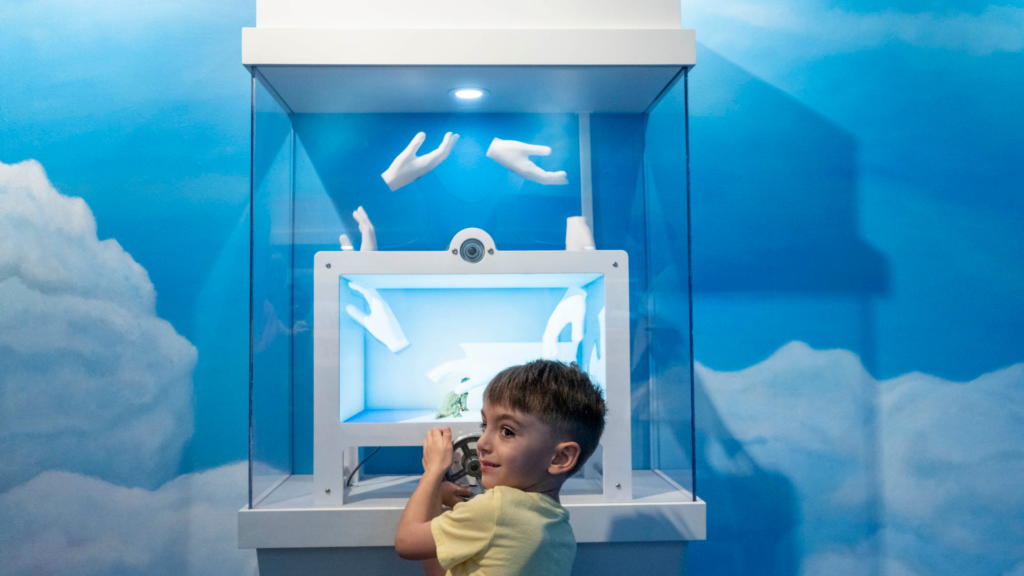
Neil Mendoza, Disruptive Devices, Fairgrounds St. Pete. Artist’s website.
AC: On a personal note, where do you find inspiration for your work? Are there specific artists or tech trends that influence your creative process?
MM: My inspiration comes from a diverse range of sources, and I draw on various influences to inform my creative process. Artists like Neil Mendoza, Francesco Lo Castro, and Zach Lieberman, who seamlessly blend technology with creativity, have been particularly influential. I’m drawn to procedural-based work and those who continually push the boundaries of creative coding.
Collaborations with researchers in Human-Computer Interaction (HCI) labs have also been enlightening. Exposure to various art forms, including sound art, contributes to my multidisciplinary approach.
Additionally, I find inspiration in the intersection of traditional craftsmanship and slow media, appreciating the value of handmade artifacts in a technologically driven world. This amalgamation of influences shapes my approach to integrating technology and art within Fairgrounds St. Pete.
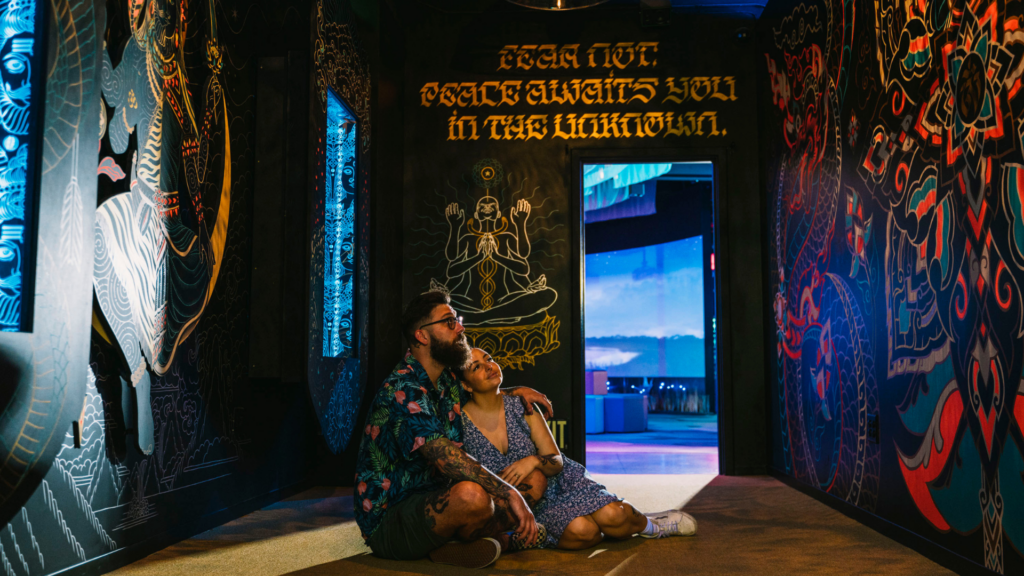
Temple of Cosmic Balance, Palehorse, Fairgrounds St. Pete. Artist’s website.
AC: Given your extensive experience in the intersection of art and technology, where do you see the future of art heading? Will technology become more intertwined with traditional art, or do you anticipate a resurgence of traditional forms?
MM: In my view, the future of art will witness a continued integration of technology without diminishing the significance of traditional forms. As technology advances, what we currently consider high-tech tools will become more conventional, much like the evolution of painting techniques over centuries. The integration of technology will become inherent in artistic processes, offering new dimensions for creative expression.
However, I also anticipate a resurgence of appreciation for traditional art forms. As automation and AI become more prevalent, the uniqueness and imperfections in human-created art may carry higher value.
Traditional craftsmanship, whether in painting, sculpture, or other forms, could experience a renaissance as a counterbalance to the precision of technology. The future may see a harmonious coexistence, with technology enhancing the creative process while traditional forms continue to be celebrated for their authenticity.
I lean towards an expressionistic approach, using AI to enhance rather than replicate artistic expression. It’s about finding a balance where technology amplifies the artist’s intent rather than overshadowing it.
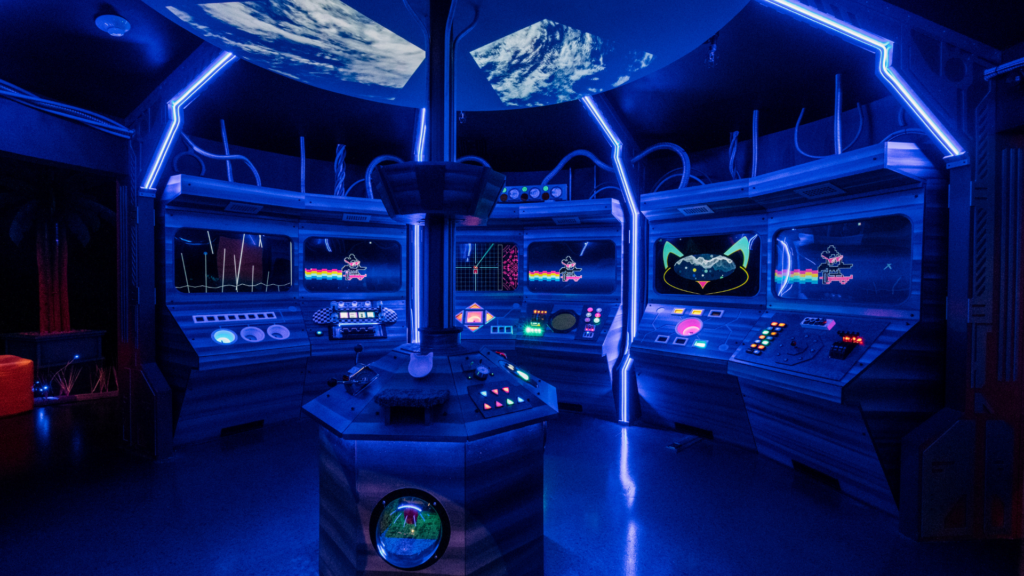
CENTCOM, Fairgrounds St. Pete. Artist’s website.
AC: Finally, Fairgrounds St. Pete has elements of an escape room, a theme park, and a museum. How do you strike a balance to ensure visitors perceive it primarily as an art museum rather than purely an entertainment venue?
MM: Striking the right balance is paramount, especially considering the diverse audience we aim to cater to. Fairgrounds St. Pete has intentionally been designed to offer a multifaceted experience, accommodating various experiential demographics. We’ve identified visitors who enjoy challenges and objectives, those who prefer absorbing the atmospheric details, and those who are drawn to the artistic intricacies of the installations.
To achieve this balance, we provide a range of experiences. Interactive elements, such as touchpoints embedded in the walls, glowing QR codes for additional information, and opportunities for deeper engagement, are strategically placed throughout the space. This ensures that visitors have the flexibility to choose their level of interaction, whether it’s solving puzzles, participating in scavenger hunts, or simply appreciating the art.
Our intentional design aims to create an immersive art museum experience rather than a purely entertainment-driven venue. By offering layers of engagement and providing avenues for exploration and reflection, we hope to convey the depth of artistic expression within Fairgrounds St. Pete.
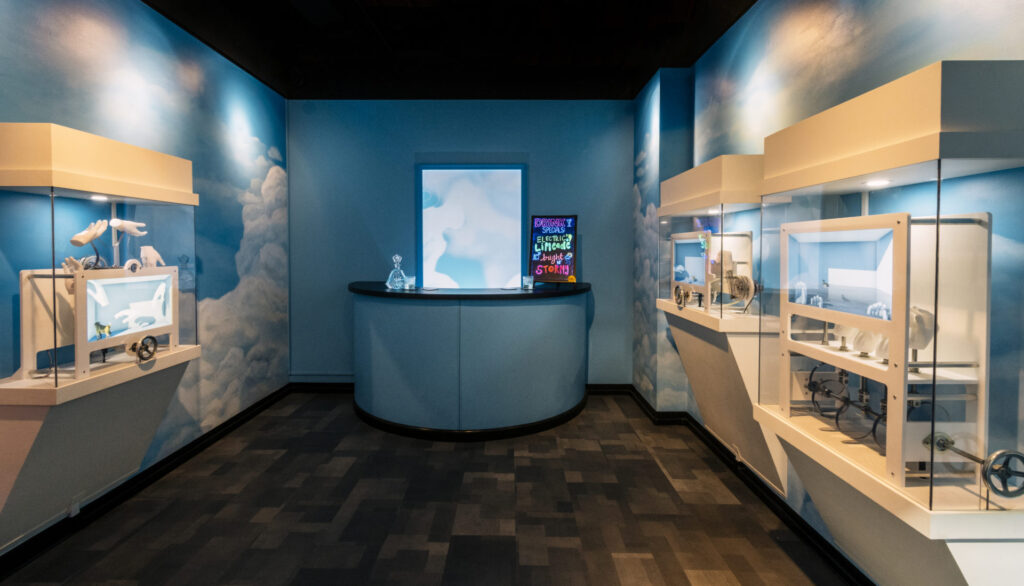
Neil Mendoza, Electric Sky Lounge Entire Room, Fairgrounds St. Pete. Artist’s website.
AC: Which artworks in Fairgrounds St. Pete would you recommend seeing?
MM: All of them are great; some of my favorites are those of Eddie Lohmeyer, Neil Mendoza, Chris Park, or Tess Oldfield. Within the diverse artistic landscape of Fairgrounds St. Pete, their distinctive installations captivate visitors with their immersive experiences.
Eddie Lohmeyer’s Topographia Chlorophobia, housed in CentCom, mesmerizes viewers with a 3-channel video installation. This work delves into the intricate interplay between natural and human-made landscapes, manipulating corrupted Nintendo 64 and PlayStation games in glitched loops accompanied by a soundscape of birds and electrical noise.
Disruptive Devices by Neil Mendoza, nestled within the Electric Sky Lounge, invites guests to interact with three artworks, altering a virtual world through crank wheels to explore the intersection of reality and digital realms with humor and surprise.
Meanwhile, Chris Parks creates a multi-sensory sanctuary at Fairgrounds St. Pete, featuring sacred art, including representations of Shiva and Shakti. This fosters moments of tranquility amid the cosmic balance of dynamic forces.
Additionally, Tess Oldfield infuses playful energy into the space with her installation L O L, utilizing phonetic charts and Arduino code to personify text, evoking laughter and high spirits.
Lastly, Francesco Lo Castro’s Myriad Loops transports visitors into the Fairgrounds St. Pete universe through a 360-degree projection-mapped animation, immersing them in the abstract vortex of geometry and light inspired by hurricanes.
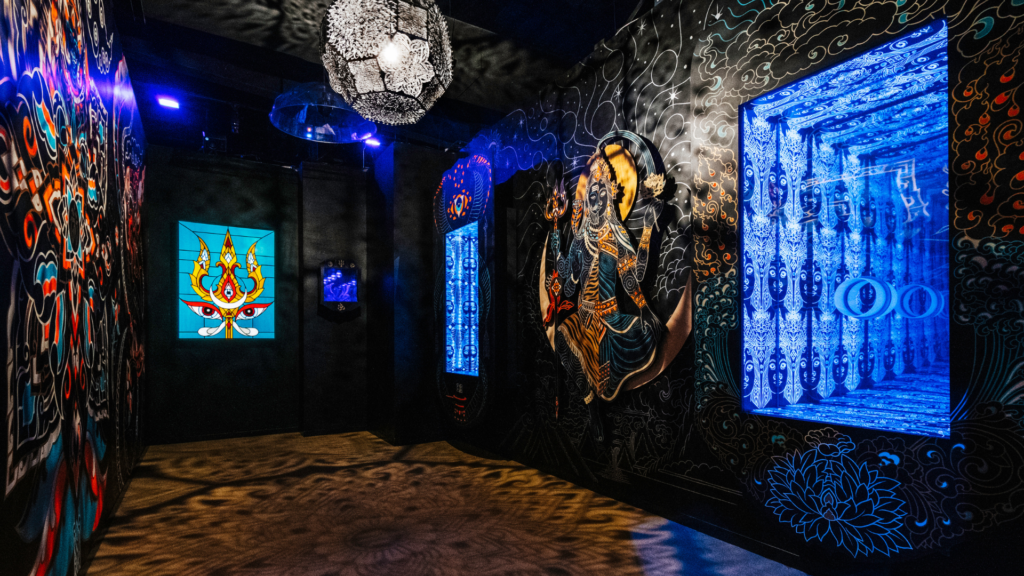
Palehorse, Temple of Cosmic Balance, Fairgrounds St. Pete. Artist’s website.
AC: Thank you for sharing your insights and providing a comprehensive overview of the unique world of Fairgrounds St. Pete. Your multidisciplinary approach and commitment to innovation contribute to a space that transcends traditional definitions.
MM: Thank you. It’s been a pleasure discussing our journey, and I’m genuinely excited about the continued evolution of Fairgrounds St. Pete at the intersection of art, technology, and human experience. Our ongoing commitment to pushing boundaries and fostering collaboration ensures that the space will continue to captivate and inspire visitors in the years to come.
